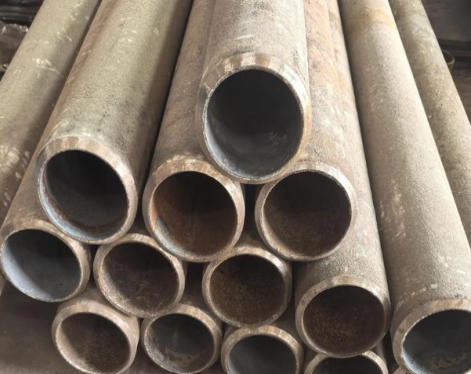Seamless steel pipe penetration testing has simple principles, flexible methods, and strong adaptability. It can detect surface opening defects in any direction at one time. It has high detection sensitivity for surface opening defects of austenitic stainless steel seamless steel pipe material and is the most commonly used. One of the non-destructive testing methods.
There are mainly the following types:
1. Classified by penetrant
According to the dye components contained in the penetrant, it is divided into three categories: fluorescence method (Ⅰ), coloring method (II), and fluorescent coloring method (Ⅲ).
The fluorescence method is highly sensitive but requires a black light. It is recommended for some occasions such as high-strength steel, crack-sensitive materials, and workpieces with stress corrosion cracking tendency; the coloring method is the most widely used, and the fluorescent coloring method is rarely used.
2. Classified according to the removal method of penetrant
According to the removal method of penetrant, it can be divided into three categories: water washing type (A), post-emulsification type (lipophilic type B, hydrophilic type D), and solvent removal type (C).
The water-washing type is easy to operate and low cost; the post-emulsification type has high sensitivity and good repeatability, but the cost is high; the solvent removal type is the most widely used.
3. Classified according to the method of applying imaging agent
According to the method of applying the developer, the developer is divided into five categories: dry powder (a), water soluble (b), water suspension (c), solvent suspension (d), and self-imaging (e).
Dry powder imaging will not spread over time; water dissolution and water suspension are suitable for large quantities of workpieces; solvent suspension operation is simple; self-development does not use imaging agents.
4. Classified by sensitivity and type of remover
According to the sensitivity level of penetration detection, it can be divided into five categories: very low, low, intermediate, high and super high.
According to the type of remover, it is divided into three categories: halogen solvents, non-halogen solvents, and special application type solvents.
Generally, the IIC method is used for the site without water source and power supply; the I/IIC method is used for the local detection of large workpieces; the I/IIA method is used for the workpieces with rough surface and low detection sensitivity requirements; the I/IIA method is used for the detection of large batches of workpieces. /ⅡA method: For workpieces with a smooth surface and high detection sensitivity, use the Ⅰ/ⅡB/D method or the IC method.
Tips: ASTM A500 Grade B Weld and Seamless Round Structural Tubing
Mechanical
Elongation A50:23 % at 20 °C
Tensile strength:400 MPa at 20 °C
Yield strength:290 MPa at 20 °C
There are mainly the following types:
1. Classified by penetrant
According to the dye components contained in the penetrant, it is divided into three categories: fluorescence method (Ⅰ), coloring method (II), and fluorescent coloring method (Ⅲ).
The fluorescence method is highly sensitive but requires a black light. It is recommended for some occasions such as high-strength steel, crack-sensitive materials, and workpieces with stress corrosion cracking tendency; the coloring method is the most widely used, and the fluorescent coloring method is rarely used.
2. Classified according to the removal method of penetrant
According to the removal method of penetrant, it can be divided into three categories: water washing type (A), post-emulsification type (lipophilic type B, hydrophilic type D), and solvent removal type (C).
The water-washing type is easy to operate and low cost; the post-emulsification type has high sensitivity and good repeatability, but the cost is high; the solvent removal type is the most widely used.
3. Classified according to the method of applying imaging agent
According to the method of applying the developer, the developer is divided into five categories: dry powder (a), water soluble (b), water suspension (c), solvent suspension (d), and self-imaging (e).
Dry powder imaging will not spread over time; water dissolution and water suspension are suitable for large quantities of workpieces; solvent suspension operation is simple; self-development does not use imaging agents.
4. Classified by sensitivity and type of remover
According to the sensitivity level of penetration detection, it can be divided into five categories: very low, low, intermediate, high and super high.
According to the type of remover, it is divided into three categories: halogen solvents, non-halogen solvents, and special application type solvents.
Generally, the IIC method is used for the site without water source and power supply; the I/IIC method is used for the local detection of large workpieces; the I/IIA method is used for the workpieces with rough surface and low detection sensitivity requirements; the I/IIA method is used for the detection of large batches of workpieces. /ⅡA method: For workpieces with a smooth surface and high detection sensitivity, use the Ⅰ/ⅡB/D method or the IC method.
Tips: ASTM A500 Grade B Weld and Seamless Round Structural Tubing
Mechanical
Elongation A50:23 % at 20 °C
Tensile strength:400 MPa at 20 °C
Yield strength:290 MPa at 20 °C









